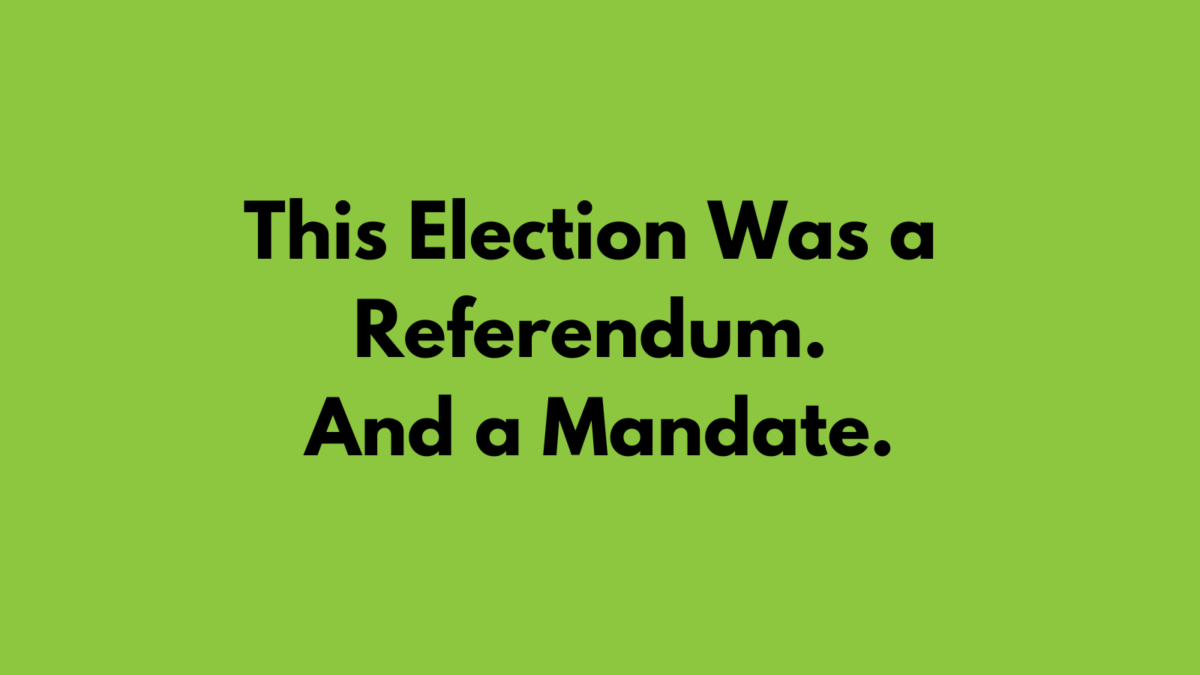On Tuesday, voters in Chapel Hill and Carrboro made a choice.
In each town, there were candidates offering distinct visions for the future of our communities.
One vision, whose adherents claimed was “new,” “modern,” or “unique,” was instead just a warmed-over version of the same rhetoric we’ve heard for generations: Let’s protect what we have and not worry too much about addressing any problems that are out of sight.
In the other vision, which imagines a future that’s different from the past, we are asked to consider where future generations will live, how they will get around, and how they can live in ways that are sustainable.
The candidates who promoted the first vision—Adam Searing and his slate of candidates in Chapel Hill, and April Mills and Stephanie Wade in Carrboro—frequently turned to themes of nostalgia in their messaging. Rather than talk about the future, these candidates often slipped into discussing the past, what our communities were once like, and why it’s the fault of the current mayors and councils for forcing changes on unwitting residents.
But the candidates who promoted the second vision had an advantage. Their vision was built upon what our communities actually need and what can be practically achieved, both technically and legally. These plans encourage us to build differently in the future, more densely, with homes, businesses, and schools connected to greenways and transit, helping us achieve our housing and climate goals. In Chapel Hill, this vision is called the Complete Community framework. In Carrboro, this vision is called Carrboro Connects.
While some claimed that this election was without substance, that the debates were just “inside baseball,” that all of the candidates sounded alike, the people who were running for office, and those who follow town government closely, knew that it was these two plans that were at stake in this election. If the Searing or Mills/Wade slates had won, the Complete Community framework and the Carrboro Connects comprehensive plan would have been unceremoniously discarded or hollowed out so much to become unrecognizable.
Instead, because our new council members ran on these plans, and their opponents so forcefully critiqued them, this election served as both a referendum on the current councils, and a mandate to move forward with the visions they adopted.
Like many who have followed town politics closely, we were bracing for these elections to be backlash elections, a replay of 2015 and 1985, when previous progressive councils were unseated because they were too ambitious. It would have been easy for experienced politicians like Jess Anderson, Barbara Foushee, Amy Ryan, and Eliazar Posada to duck tough votes, like the Housing Choices Text Amendment and the alignment for the Bolin Creek Greenway, and distance themselves from the council policies they helped put in place. (Ryan voted against the text amendment, but defended missing middle housing on the campaign trail).
Instead, they ran on a vision that included these tough votes, making sure everyone knew exactly where they stood and what they planned to do. This was not the easy path, but it was the right path, because we now have councils in both towns who have a mandate from the voters in an election in which more people voted than ever before. As recently as 2019, only 8,000 people voted in the Chapel Hill municipal election. This year it was more than 12,000. For the first time, more than 4,000 people voted in Carrboro’s municipal election. (More people voted in the special election for Eliazar Posada in May 2022, which was held the same day as a competitive Democratic primary.)
In 2015, mayor Pam Hemminger, who was then aligned with CHALT, received 4,892 votes, enough to oust incumbent Mark Kleinschmidt in an eleven-point victory, 55-44. This year, Adam Searing received 4,943 votes, but so many more people voted that Jess Anderson’s 7,092 votes made the election a blowout, defeating Searing 58-41.
This is why local elections matter. Why this local election mattered, and must matter.
As Carrboro mayor Damon Seils, speaking after the Carrboro election results were announced, told WCHL on election night, too often elected officials have disregarded the will of voters, instead giving in to an organized and angry minority who is interested in stopping progress at all costs. But this time he argued, things should be different. “We need to take those definitive results for what they are.. and act accordingly, make policy accordingly, govern accordingly.”
Ten years from now, when we ask when Chapel Hill and Carrboro decided to embrace the future rather than wallow in the past, we will look to Tuesday, November 7, 2023. This was an election where the people in Carrboro and Chapel Hill considered two visions, one familiar, the other new, and picked the one that actually takes our community, and its future, seriously.

